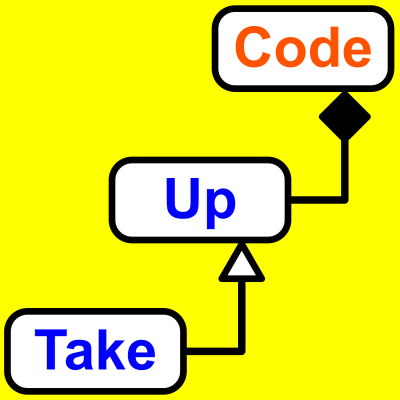Sinopsis
Take Up Code is a podcast that explains computer programming topics through fun and engaging examples that you can relate to. The guided format allows you to gain valuable understanding of topics that will reinforce your studies, allow you to train new skills that you can apply on your job, and change your thinking about what it takes to become a professional programmer. The episodes are as short as possible so you can squeeze them into your daily routine.
Episodios
-
179: Basic Electronics: Capacitance.
17/04/2017 Duración: 08minDo you know how your touch screen works?
-
178: Basic Electronics: Magnetic Fields And Current.
10/04/2017 Duración: 07minMoving charge produces a magnetic field and a moving magnetic field produces current.
-
177: Basic Electronics: AC/DC: Alternating Vs. Direct Current
03/04/2017 Duración: 06minDo you know where the nearest power plant is?
-
176: Basic Electronics: Voltage, Current, Resistance.
27/03/2017 Duración: 11minKnowing some basic electronics helps you become a better programmer.
-
175: Multiplexing: Many Over One.
20/03/2017 Duración: 06minHow do you send multiple messages across a single channel?
-
174: Error Correction: Hamming Distance And Codes.
13/03/2017 Duración: 08minHow do you correct errors once you identify them?
-
173: HMAC: Keyed Hashed Message Authentication Code.
06/03/2017 Duración: 09minHow do you stop an attacker from just changing a hash?
-
172: Hashes Offer The Best Error Detection.
27/02/2017 Duración: 09minIf you receive some information, how do you know if it is intact or has been changed?
-
171: Checksums Offer Better Error Detection.
20/02/2017 Duración: 12minIf you receive some information, how do you know if it is intact or has been changed?
-
170: Parity: Simple And Fast Error Detection.
13/02/2017 Duración: 09minIf you receive some information, how do you know if it is intact or has been changed?
-
169: Your Guide To Computer Programming. Part 4 of 4.
06/02/2017 Duración: 08minWhy should you learn how to program? What is programming? What specific steps can you take? How can you apply programming?
-
168: Your Guide To Computer Programming. Part 3 of 4.
30/01/2017 Duración: 09minWhy should you learn how to program? What is programming? What specific steps can you take? How can you apply programming?
-
167: Your Guide To Computer Programming. Part 2 of 4.
23/01/2017 Duración: 10minWhy should you learn how to program? What is programming? What specific steps can you take? How can you apply programming?
-
166: Your Guide To Computer Programming. Part 1 of 4.
16/01/2017 Duración: 09minWhy should you learn how to program? What is programming? What specific steps can you take? How can you apply programming?
-
165: Sockets And Ports: The Hidden Pieces.
09/01/2017 Duración: 11minHow does one application communicate with another application?
-
164: SCTP vs. TCP vs. UDP
02/01/2017 Duración: 08minYou will learn more about the strengths of the SCTP, TCP, and UDP protocols by comparing them.
-
163: SCTP: Stream Control Transmission Protocol.
26/12/2016 Duración: 08minSCTP is another protocol like TCP and UDP with aspects of both.
-
162: OSI Model: Seven Layers of Communication.
19/12/2016 Duración: 05minThe OSI model will help you understand how computers communicate.
-
161: MAC: Media Access Control Address.
12/12/2016 Duración: 09minA MAC address is a physical address unique to your computer.
-
160: UDP: User Datagram Protocol.
05/12/2016 Duración: 06minSometimes speed and simplicity are more important than reliability.

































